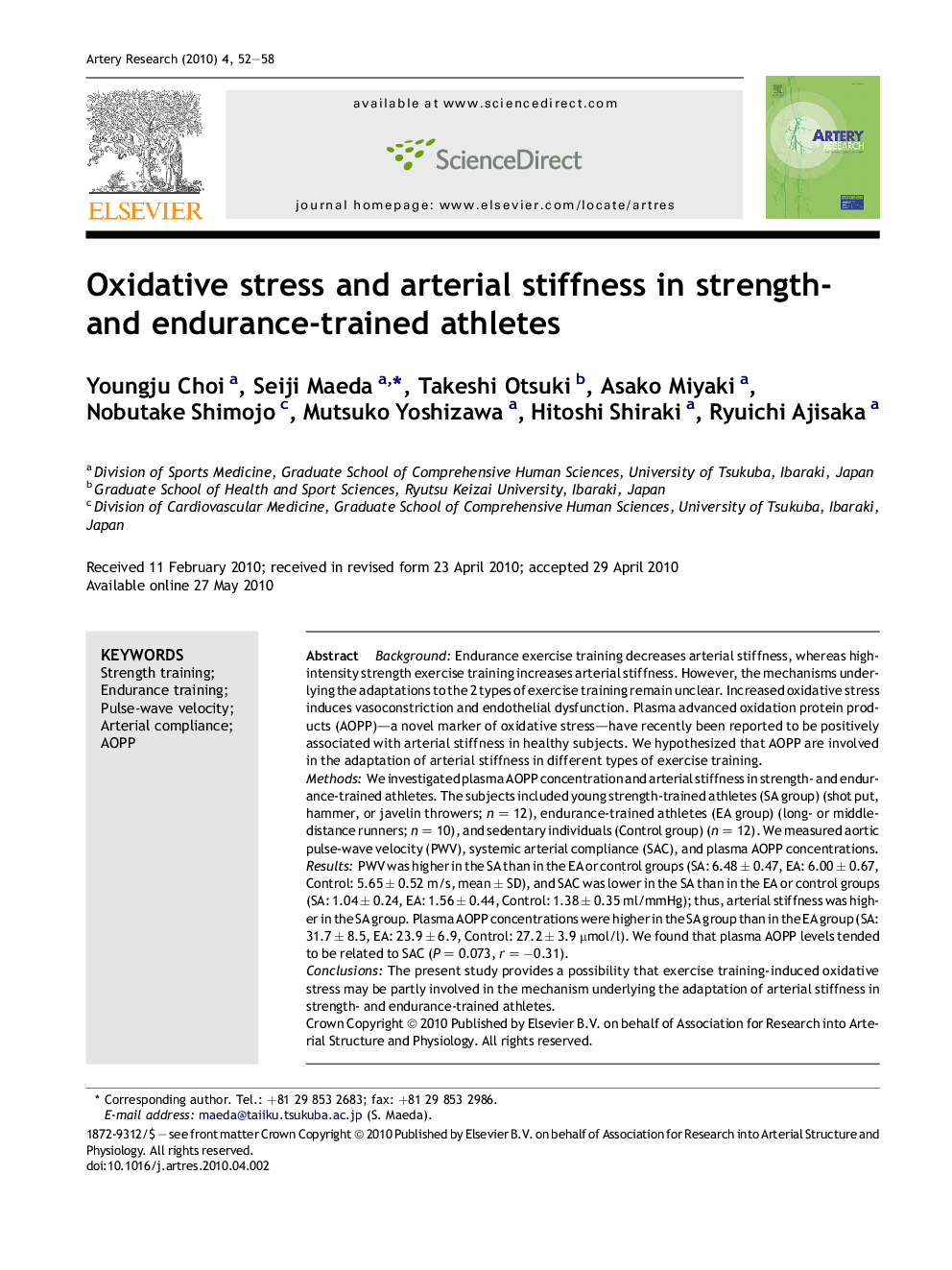| کد مقاله | کد نشریه | سال انتشار | مقاله انگلیسی | نسخه تمام متن |
|---|---|---|---|---|
| 2891908 | 1172294 | 2010 | 7 صفحه PDF | دانلود رایگان |

BackgroundEndurance exercise training decreases arterial stiffness, whereas high-intensity strength exercise training increases arterial stiffness. However, the mechanisms underlying the adaptations to the 2 types of exercise training remain unclear. Increased oxidative stress induces vasoconstriction and endothelial dysfunction. Plasma advanced oxidation protein products (AOPP)—a novel marker of oxidative stress—have recently been reported to be positively associated with arterial stiffness in healthy subjects. We hypothesized that AOPP are involved in the adaptation of arterial stiffness in different types of exercise training.MethodsWe investigated plasma AOPP concentration and arterial stiffness in strength- and endurance-trained athletes. The subjects included young strength-trained athletes (SA group) (shot put, hammer, or javelin throwers; n = 12), endurance-trained athletes (EA group) (long- or middle-distance runners; n = 10), and sedentary individuals (Control group) (n = 12). We measured aortic pulse-wave velocity (PWV), systemic arterial compliance (SAC), and plasma AOPP concentrations.ResultsPWV was higher in the SA than in the EA or control groups (SA: 6.48 ± 0.47, EA: 6.00 ± 0.67, Control: 5.65 ± 0.52 m/s, mean ± SD), and SAC was lower in the SA than in the EA or control groups (SA: 1.04 ± 0.24, EA: 1.56 ± 0.44, Control: 1.38 ± 0.35 ml/mmHg); thus, arterial stiffness was higher in the SA group. Plasma AOPP concentrations were higher in the SA group than in the EA group (SA: 31.7 ± 8.5, EA: 23.9 ± 6.9, Control: 27.2 ± 3.9 μmol/l). We found that plasma AOPP levels tended to be related to SAC (P = 0.073, r = −0.31).ConclusionsThe present study provides a possibility that exercise training-induced oxidative stress may be partly involved in the mechanism underlying the adaptation of arterial stiffness in strength- and endurance-trained athletes.
Journal: Artery Research - Volume 4, Issue 2, June 2010, Pages 52–58